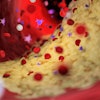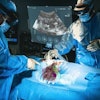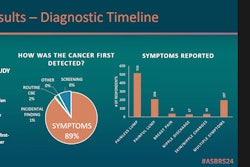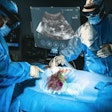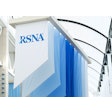An AI model developed by Duke University researchers can predict five-year breast cancer risk from mammograms, a study published March 19 in Radiology found.
A team led by Jon Donnelly from the Durham, N.C.-based university found that their deep learning-based algorithm, a simplified offshoot of Mirai, performed well in predicting cancer risk by evaluating breast asymmetry features on mammograms.
“We hope that this [model] will enable some of those personalized screening strategies to reduce the load on patients and radiologists,” Donnelly told AuntMinnie.com.
While attending regular screening mammogram appointments is important in lowering the risk of dying from breast cancer, pinpointing which women are at higher risk of developing the disease can be tricky.
AI has shown that it can help in this area. Mirai is a deep learning-based algorithm that has shown that it can help predict breast cancer. However, Donnelly and colleagues noted that not much is known about Mirai’s reasoning process. They cautioned that with this in mind, the algorithm could be relied on too heavily by radiologists and lead to incorrect diagnoses.
The researchers developed AsymMirai, which they highlighted is simpler and easier to understand than Mirai. The algorithm was built on the front-end deep learning portion of Mirai and was developed with local bilateral dissimilarity as an interpretable module. This module examines tissue differences between the left and right breasts.
The study compared 210,067 mammograms from 81,824 patients in the EMory BrEast imaging Dataset (EMBED) from 2013 to 2020 using both Mirai and AsymMirai models.
The Pearson correlation coefficients (r values) for the predictions from each year between both models starting at year one were 0.6832, 0.7011, 0.7011, 0.6987, and 0.6987, respectively. This indicates that AsymMirai achieved similar predictive performance to that of Mirai.
Also, AsymMirai achieved similar area under the curve (AUC) values compared with Mirai.
| Area under the receiver operating curve (AUC) performance of AsymMirai compared with Mirai in predicting breast cancer risk | |||
|---|---|---|---|
| Mirai | AsymMirai | p-value | |
| 1-year cancer risk | 0.84 | 0.79 | 0.002 |
| 5-year cancer risk | 0.71 | 0.66 | < 0.001 |
Finally, in a subgroup of 183 women for whom AsymMirai repeatedly highlighted the same tissue over time, AsymMirai achieved a three-year AUC of 0.92.
Donnelly said this work shows that many AI models can be simplified to understandable reasoning. He added that future directions for AsymMirai include validating the team’s results and integrating longitudinal reasoning to expand its capabilities.
“We’re really excited about this kind of work and think that we’ve learned something interesting that we hope the radiology community will take in and build upon,” he told AuntMinnie.com.
In an accompanying editorial, Vivianne Freitas, MD, from the Joint Department of Medical Imaging in Toronto, Canada wrote that the study represents not a potential contribution of AI to the existing body of knowledge in breast cancer risk prediction assessment.
Along with that, it shows that AI models “can be effective and understandable, serving as a bridge and narrowing the divide between the intricate world of AI algorithms and their real-world clinical application,” she wrote.
The full study can be found here.
